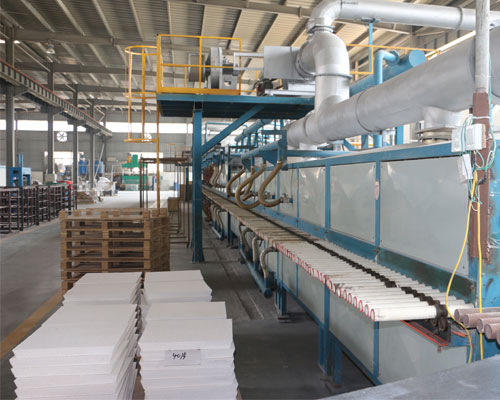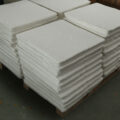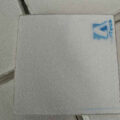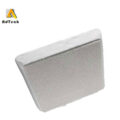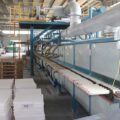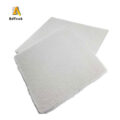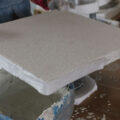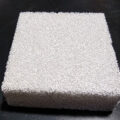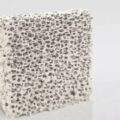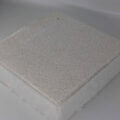The foam ceramic filter is made by foam replication technology, which is a conventional method of producing ceramic foam used as a molten metal filtering device. In the foam ceramic filters manufacturing process, the ceramic slurry is coated on the polyurethane foam, then dried and fired. During the firing process, the polyurethane foam coated in the ceramic evaporates, but the ceramic structure is preserved, thus forming a ceramic foam like an exoskeleton that has voids where the polyurethane used to be. This structure is essentially the connection between the pillars and the pillars with pores around or inside.
Foam Ceramic Filters Manufacturing Process
The slurry used is selected according to the ceramic material used in the application. The slurry used must be able to make the final product have sufficient characteristics, and must have sufficient mechanical strength to withstand specific high-temperature conditions. In addition, the slurry has relatively high fluidity, and it is more preferable that the slurry used in the filter is composed of a ceramic suspension aqueous solution. Usually, the slurry contains water. The slurry may also contain additives such as binders and surfactants.
The elastic foam material is impregnated with ceramic water slurry to form a fiber-like net coating on the surface of the elastic foam material, and the cavities are also filled. Usually, the foam is repeatedly impregnated with the slurry, and the foam is pressed between two impregnations to ensure complete foam impregnation.

Press the impregnated foam to squeeze out 25-75% of the slurry, leaving behind the fiber-like network part that has been coated with it. In continuous operation, the impregnated foam can be passed through a preset roller to discharge the slurry from the foam, leaving the desired amount to be impregnated. This can also be achieved by simply squeezing the elastic foam material manually to the desired degree. At this stage, the foam is still elastic and forms a structure suitable for the specific filtration task. With conventional methods, it is necessary to place the molded foam in a proper position until the polymeric substrate decomposes, or until the ceramic sinters.
Dry the impregnated foam at 35-700°C for 2 minutes to 6 hours. After drying, the material is heated at a high temperature to bond the ceramic particles to form a fiber-like web. The impregnated and dried material is heated in two stages. The first stage is heating at a temperature of 350-700°C and heating in this temperature range for 2 minutes to 6 hours to make the elastic foam net burn out or volatilize. This step can obviously be part of the drying cycle. The second stage is heating at a temperature of 900-1700°C, and heating it within this temperature range for 2 minutes to 10 hours to bond the ceramics.
The molten aluminum ceramic foam filter has an open-cell structure, which is characterized by many interconnected cavities surrounded by a ceramic mesh. Depending on the structure required for a particular molten metal filtration process, the ceramic foam can have any desired structure.

